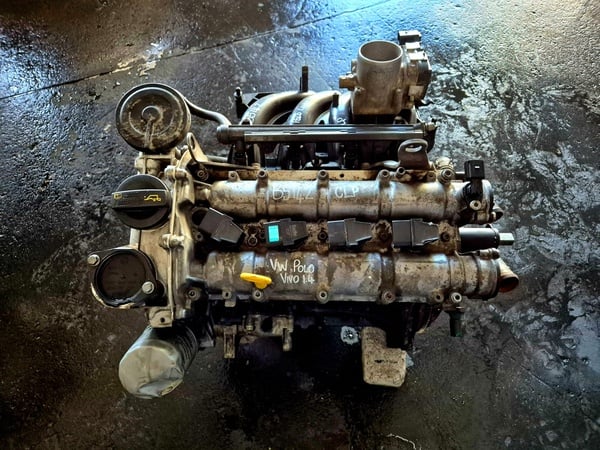Keep smooth operations with a properly serviced clp engine.
Wiki Article
The Duty of a Clp Engine in Revolutionizing Engine Performance and Sustainability
The development of CLP engine technology provides a zero hour in the vehicle sector, where performance and sustainability assemble in extraordinary ways. By enhancing burning processes and enabling for vibrant adjustments in compression ratios, these engines not just guarantee boosted fuel efficiency and minimized discharges yet also difficulty typical engineering paradigms. As the market comes to grips with the pushing demand for greener remedies, the implications of adopting CLP innovation prolong far past simple efficiency metrics. What continues to be to be seen is just how these innovations will reshape the future landscape of automobile engineering and environmental obligation.Understanding CLP Engine Technology
As the vehicle industry continuously looks for cutting-edge services to improve effectiveness and performance, understanding CLP engine innovation becomes vital. The term CLP means Compression-Low Pressure, an advanced engine design that concentrates on enhancing combustion procedures and lowering exhausts. This innovation operates by keeping a low-pressure atmosphere within the combustion chamber, which promotes a much more complete gas burn and decreases unburned hydrocarbons.One of the key attributes of CLP engine innovation is its capacity to change the compression ratio dynamically. This versatility allows the engine to run efficiently throughout various driving problems, enhancing gas economy while all at once enhancing power result. Furthermore, CLP engines utilize advanced products and design concepts to lower weight and thermal losses, additionally adding to general performance.
Moreover, the assimilation of digital control systems plays an important duty in managing the engine's efficiency criteria. These systems enable real-time modifications to ignition timing and gas injection, enhancing burning for both power and efficiency. By comprehending CLP engine innovation, stakeholders in the vehicle field can better appreciate its capacity in driving the future of engine layout, performance, and sustainability.
Performance Enhancements Offered
CLP engine innovation supplies substantial performance enhancements that set it besides typical engine designs. One of the main benefits of CLP engines is their capacity to run successfully across a broader variety of speeds and tons. This versatility converts right into boosted torque distribution and velocity, providing a more responsive driving experience.Additionally, the advanced combustion process utilized in CLP engines optimizes fuel-air mixing, resulting in higher thermal efficiency. This enhancement not only makes best use of power output but also minimizes power loss, leading to an engine that does far better under different problems.
In addition, the modular architecture of CLP engines allows for easier assimilation with crossbreed systems, magnifying their performance potential - clp engine. This adaptability makes it possible for suppliers to make automobiles that satisfy consumer demands without giving up agility or power
The precision design associated with CLP innovation also adds to reduce friction and wear, boosting engine durability and decreasing the regularity of upkeep. In general, these efficiency improvements position CLP engines as a leading selection in the quest of high-performance, dependable, and functional engine options.
Environmental Advantages of CLP Engines
One of one of the most engaging advantages of CLP engines hinges on their environmental advantages, which are increasingly critical in today's vehicle landscape. These engines are developed to maximize fuel performance, considerably reducing carbon discharges compared to traditional combustion engines. By making use of sophisticated burning techniques and cutting-edge materials, CLP engines advertise cleaner exhaust outputs, contributing to boosted air quality.In addition, the reduction in gas intake not only causes lower greenhouse gas exhausts yet also saves valuable natural deposits. As fossil fuel books decrease, the change towards CLP innovation stands for a strategic step in the direction of sustainability. The engines are frequently suitable with different fuels, even more improving their eco-friendly appeal and permitting a varied power profile.
Moreover, the lightweight style of CLP engines assists lower lorry weight, which in turn decreases the energy needed for propulsion. This causes reduced functional power consumption and a minimized environmental footprint. In summary, CLP engines stand at the leading edge of initiatives to minimize environment adjustment and advertise lasting techniques in the automotive market, symbolizing a future where efficiency and ecological responsibility are not mutually exclusive.
Comparison With Traditional Engines
While traditional engines have lengthy dominated the automotive sector, the intro of CLP innovation presents a substantial change in performance and performance. Standard interior burning engines mostly depend on gas combustion, which not only restricts thermal efficiency yet likewise adds to greater emissions. In comparison, CLP engines utilize advanced thermal administration and a distinct burning process, boosting fuel performance and substantially reducing greenhouse gas exhausts.Furthermore, typical engines operate on set power curves, which can prevent performance in differing driving problems. CLP engines, nevertheless, are made to adapt their efficiency dynamically, providing ideal power delivery based on real-time needs. This adaptability causes improved acceleration, responsiveness, and total driving experience.
Maintenance likewise varies considerably; standard engines usually require regular oil adjustments and component replacements as a result of wear and tear. clp engine. CLP he said engines, with fewer relocating components, promise decreased upkeep needs and longer operational life expectancies

Future Potential Customers and Innovations
As the vehicle landscape develops, the future of engine technology is significantly concentrated on advancements that improve performance and sustainability. go The Clp engine, with its one-of-a-kind style and operational efficiencies, is positioned to play an essential role in this transformation. Future growths may involve improvements in products science, enabling the construction of lighter and extra resilient elements, therefore lowering general vehicle weight and boosting gas effectiveness.In addition, the assimilation of man-made knowledge and artificial intelligence into engine management systems is anticipated to maximize efficiency dynamically, enabling real-time changes based on driving problems. These innovations can additionally lessen emissions and enhance power usage.
Additionally, research right into alternative fuels, including hydrogen and biofuels, presents exciting opportunities for Clp engines, aligning performance with green campaigns. this post clp engine. As regulative structures come to be more stringent, the adoption of such technologies will certainly be vital in accomplishing sustainability objectives without jeopardizing power
Conclusion

Report this wiki page